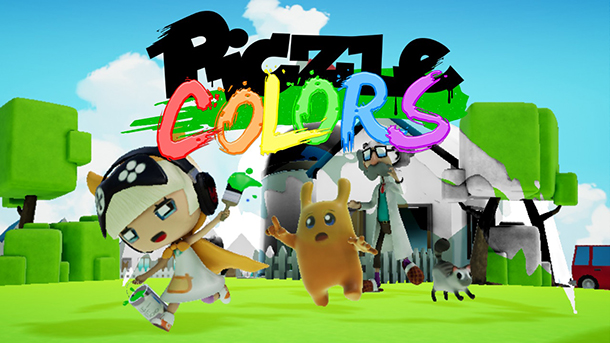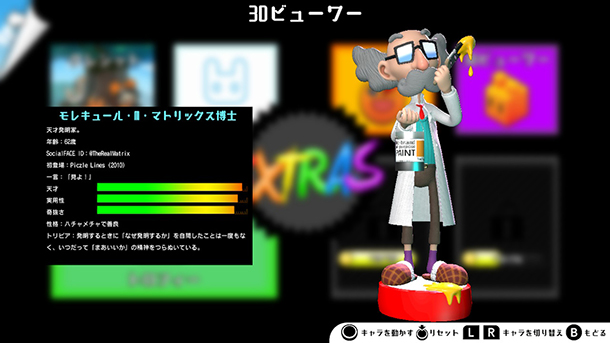Piczle Colors post-mortem
A quick look at the development of Piczle Colors for Nintendo Switch, what went well and what really didn't.

Piczle Colors post-mortem

This is a cross-post from the Piczle Cross Adventure devblog.
Piczle Colors is currently available from the Nintendo Switch eShop world-wide and as part of the Piczle Puzzle Pack 3-in-1, a currently Asia-only physical release (details here). It was originally released on January 31st , 2019, and published by Rainy Frog LLC.
Every element of the UI and game input had to be designed for both controller and touch-screen input.
The decision to have both controller and touch input lead to more work than initially imagined. It did limit the maximum size of puzzles, as I was very careful to keep the game playable with your average finger in handheld mode. Mostly, rather than having a layer of touch interface “on top” of a regular controller interface, I ended up basically creating two whole interfaces. Needless to say this also complicated QA and all the extra features players can unlock through the game. Everything had to be controllable by both touch and JoyCON input, leading to quite a lot of extra work to make sure it all controlled smoothly.
“Use touch screen”, three little words but a world of hurt.
Usually during a project you learn some techniques or engine quirks that would have made part of your project a whole lot easier had you know about them earlier. In this case, not having done the right research, I ended up writing a controller input system that, frankly, was a lot more ropey than UE4’s own input system. Initially I thought it wasn’t fit for my purpose, but of course it turned out it was but my understanding of it wasn’t. A little more research in this area before starting would have saved some time and sweat.
The colouringbook extra that nobody wanted.
One thing I noticed with the Switch release of Piczle Lines DX was that some players, most notably Japanese, were very happily sharing screenshots on-line using the Switch’s screen capture and Twitter features. From just showing a fun puzzle they cleared to showing off they finished a difficult puzzle pack, or even the whole game. Often they’d use the editing features on the Switch to add text or obscure puzzle solutions so as not to spoil them for others.
Players freely sharing such social posts is of course great for visibility and spreading the word about the game (as well as being a great boost for your confidence seeing people genuinely enjoy something you’ve made). For Piczle Colors I thought I’d actively encourage such behaviour by including, as one of the unlockable extras, a colouring book mini-“game” in the hope people would share their creations on-line and so give Piczle Colors more visibility.
Even though the creation of this colouring book feature didn’t cost too much time, it ended up being a complete failure as, to date, I’ve only tracked down a single social media post featuring a screen capture of it.

The story was cut down to a prologue and epilogue only.
With a tight budget and schedule some parts of the design had to be sacrificed. The biggest cut came to the story. Initially every “level” (the different sets of puzzles, as denoted by one of the colours of the rainbow, can be seen as levels) would start and end with a story segment. Due to time constraints I ended up having only a prologue story segment and a epilogue after the player has cleared the minimum number of puzzles.
I didn’t have to sacrifice any of the story’s depth – it had none. But the silly little vignettes would have kept the players with the characters more and have built them up some more in the overall Piczle canon. Part of the appeal of the Piczle series are the characters and the silly little stories used to give a reason, however frivolous, to the logic-puzzling. Upon reflection I should probably have cut some of the extras and keep more of the story vignettes instead.
Piczle Colors was, like Piczle Lines DX, localised for 9 different languages.
Thanks to the support from publisher Rainy Frog, the Piczle series on Nintendo Switch have shipped with 9 languages (English, French, Italian, Spanish, German, Portuguese, Japanese, and traditional and simplified Chinese). This has been a big task but one that I feel had paid off in terms of accessibility across the markets worldwide. Japan still takes a large share of sales, so Japanese localisation is a must for games like mine.
Localisation is a big task and takes a lot of time, money and testing, but it is absolutely worth it. My Piczle Lines DX experience did help me prepare a little for Piczle Colors’ localisation. But of course, you’ll never have enough space for German, no matter how much extra you think you are giving it.
Piczle Lines DX enjoyed some relatively easy press visibility due to it appearing fairly early on in the Switch’s life cycle. (pictured: Switch Player Magazine)
When Piczle Lines DX was released fairly early on in the Switch’s lifecycle the landscape was entirely different. Media outlets were hungry for Switch content to write about, so it was fairly easy to get people interested. The eShop wasn’t entirely flooded yet and new games would be on the front page for a while. Piczle Lines DX even made the top sellers tab in the Japanese eShop! By the time Piczle Colors was released everything had changed.
It was much harder to compete for media attention, as it became much harder to compete for visibility on the eShop. Dozens of titles get released every day, dozens of games are on sale, it’s pretty mad. It’s awesome for the consumer, but quite tough on the indie developer.
More and earlier marketing was required. Even pushing the release to a little after the holiday flood wasn’t really enough. For anybody who has bought into the Switch gold rush narrative, be aware you’ll face some challenges.
Piczle Colors in the Nintendo eShop.
The Piczle series has generally been created with tiny teams at most. They may seem deceptively simple games but there is a lot going on, especially with all the little extras that hopefully elevate the Piczle series. For Piczle Colors I went for solo development and set up a few personal challenges and goals and, I’m glad to say, I more or less met them. I managed to design, develop and release Piczle Colors and passed Nintendo lotcheck with the first submission, within budget and within a decent schedule. Sure, some aspects needed to be cut, but that is, sadly, a natural and accepted part of the game development process. But I feel I managed to release Piczle Colors more or less as intended.
Piczle Colors is not entirely done yet. Once some time frees up I want to revisit it, tweak it some more, perhaps add some more content, maybe even port it. There is still something about Piczle Colors people haven’t figured out yet, and perhaps never will, but I’m very happy with it, overall. And seeing people play it, finish it, tweet about it has been a great privilege.
Read more about:
BlogsAbout the Author(s)
You May Also Like








